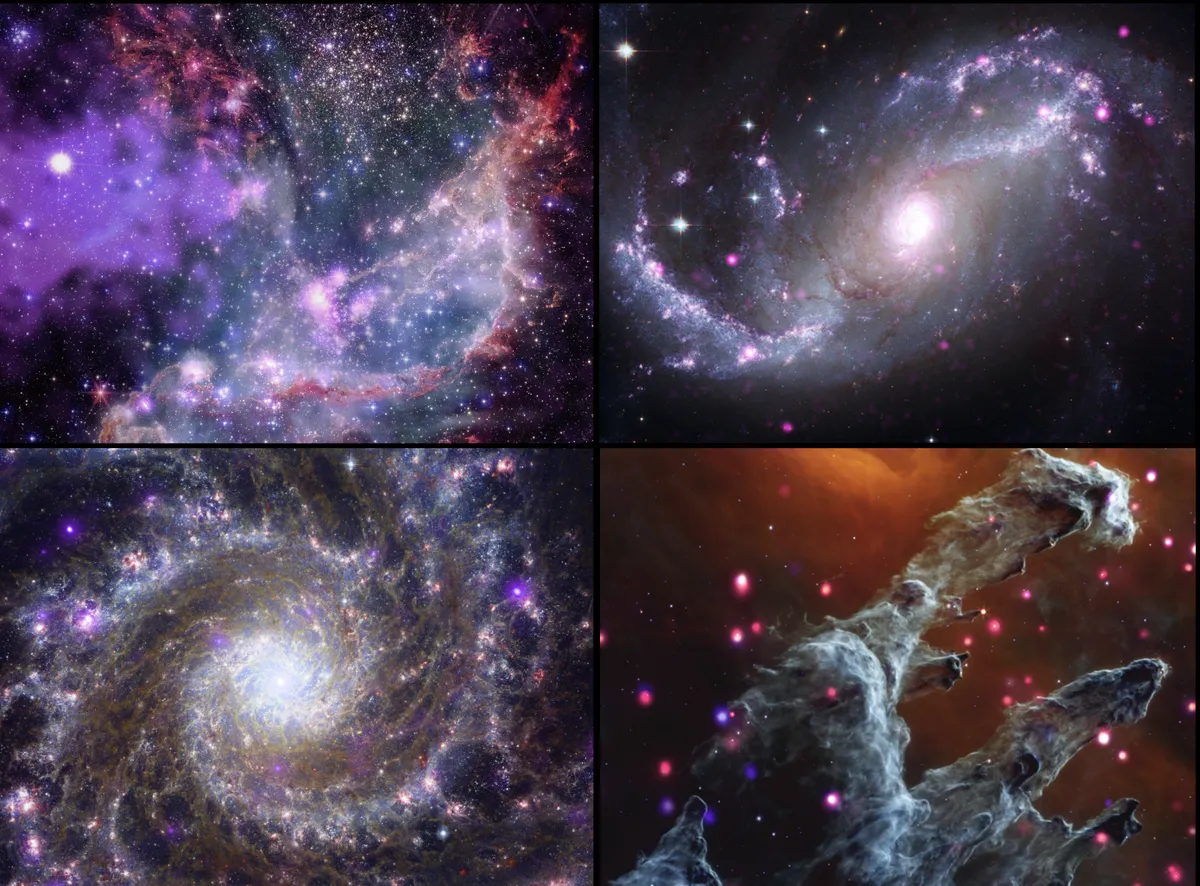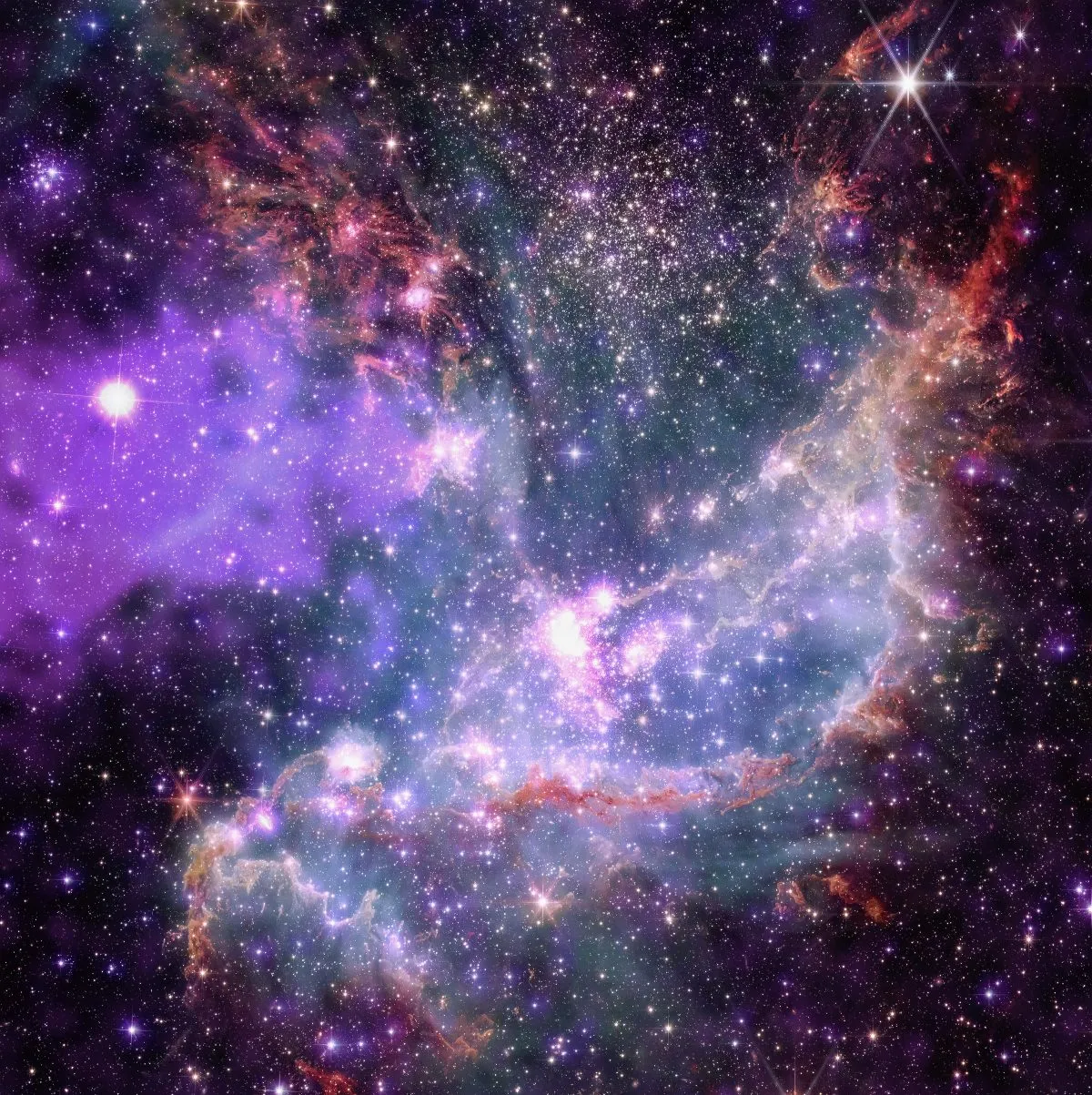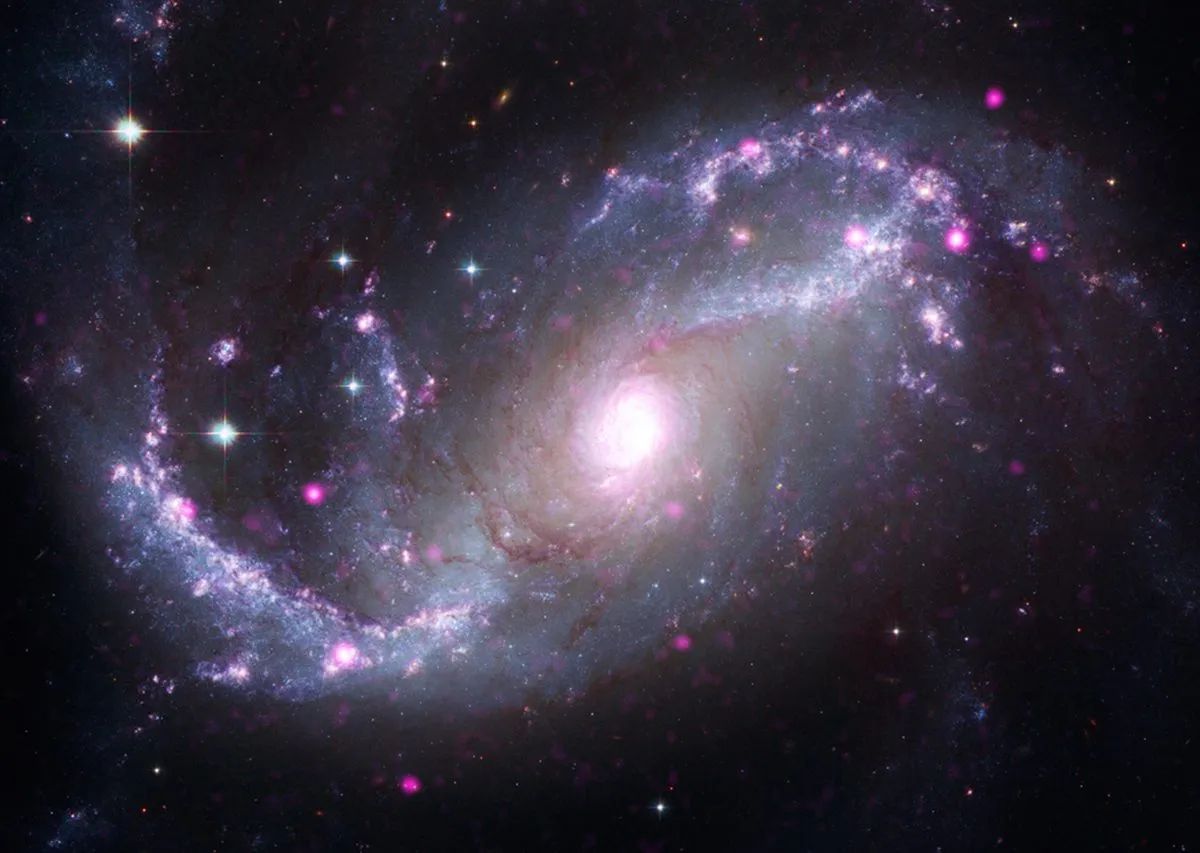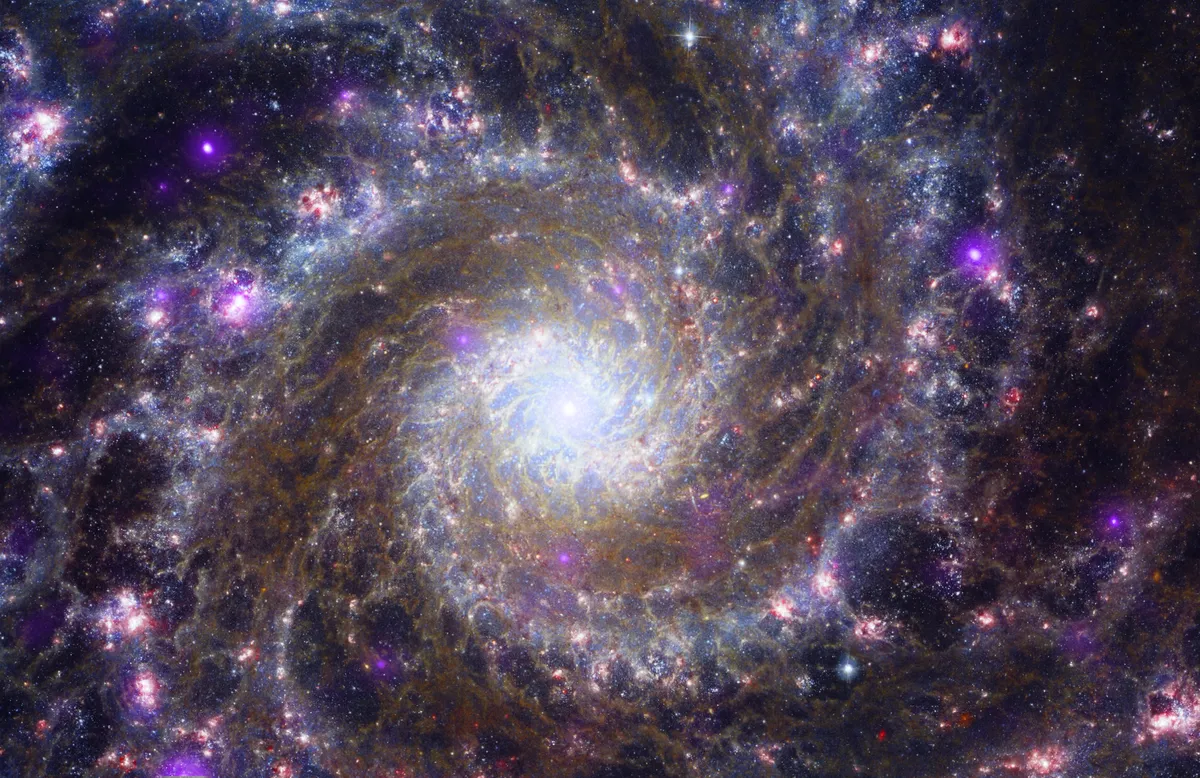Four brand new images captured by the James Webb Space Telescope and the Chandra X-ray Observatory show the amazing views of the cosmos that can be produced when such powerful space observatories combine their efforts.
The new images show two galaxies, a nebula and a star cluster, as seen in x-ray (Chandra) and infrared (Webb).

Data from NASA’s Hubble Space Telescope (optical light) and retired Spitzer Space Telescope, the European Space Agency’s XMM-Newton and the European Southern Observatory’s New Technology Telescope have also been used.
Let's take a look at each of the brand new images in turn.
NGC 346

This image shows a beautiful star cluster that's relatively close to Earth: just 200,000 lightyears away.
It can be found in the Small Magellanic Cloud, which is a satellite galaxy of our own Milky Way.
Webb data shows wisps of cosmic gas and dust: the very ingredients consumed by growing stars and planets during their formation.
Chandra's contribution to the image includes the large purple cloud on the left, which is the remnant of the supernova explosion of a massive star.
Chandra data also shows young stars, scorching hot, that are projecting powerful stellar winds outwards into space.
NGC 1672

Barred spiral galaxy NGC 1672 is categorised as such because it is a distinct spiral shape, but has a band of stars stretching across the galactic core.
Chandra data reveals neutron stars and black holes dragging material away from companion stars.
Hubble and Webb data helps fill out the dust and gas that can be seen within the spiral arms.
The Eagle Nebula

Hubble fans will be well aware of M16, the Eagle Nebula, which is also known as the Pillars of Creation, one of the Hubble Space Telescope's most famous images.
Here, Webb data shows dark columns of dust and gas that are shrouding newborn stars, while the purple and pink dots are Chandra data revealing young stars glowing in X-ray light.
M74

The second spiral galaxy in this brand new collection of cosmic images, M74 shows incredible definition.
Also known as the Phantom Galaxy, this spiral is about 32 million lightyears from Earth.
Webb's infrared view reveals gas and dust, while the Chandra data shows glowing, active stars in purple.
